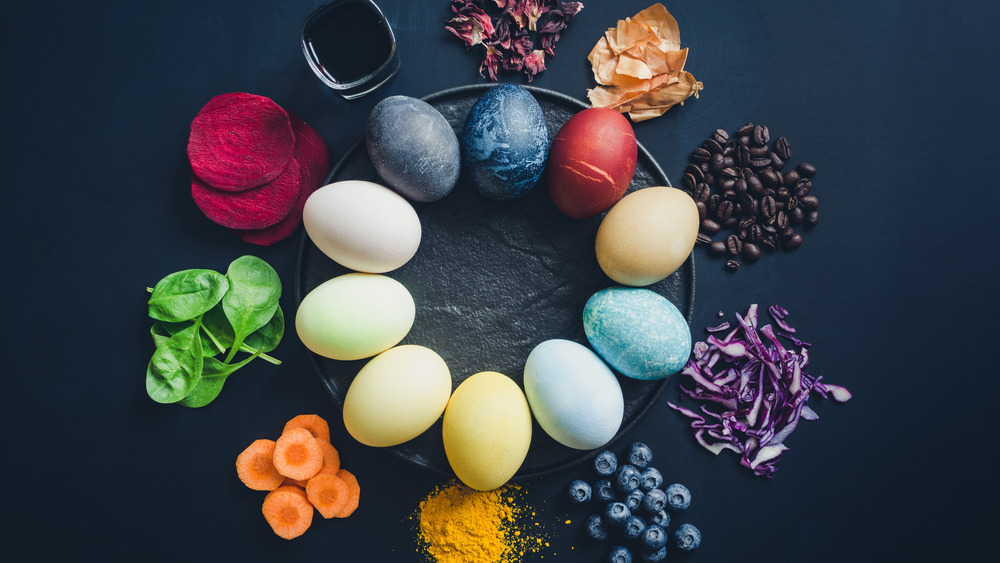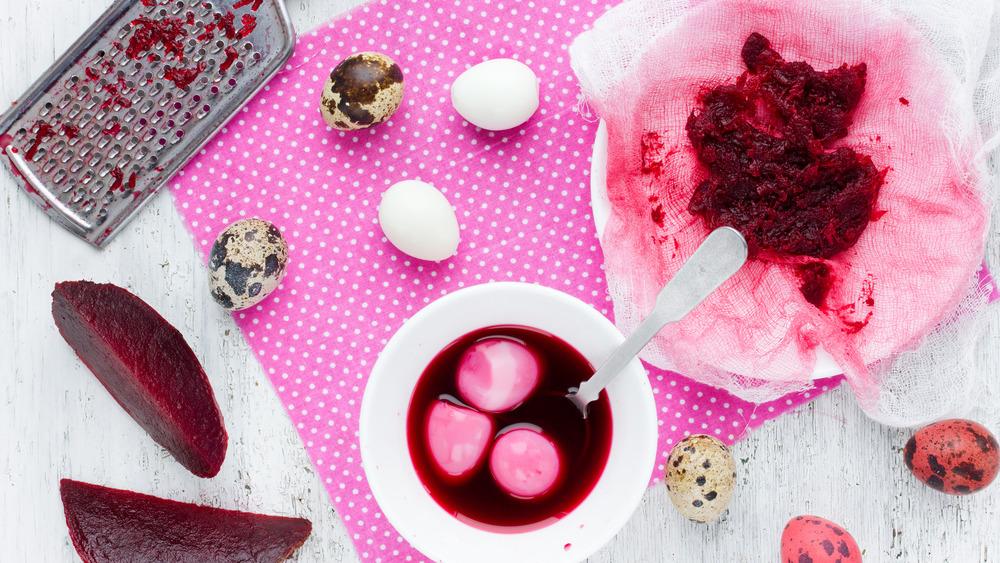Natural Substitutes You Can Use For Artificial Food Coloring
Though you may not realize it, artificial food coloring is in much of the food we eat. The journal Environmental Health Perspectives states that artificial dyes are found in "thousands of foods," from candy and cereal to vitamins and even fruit! Though you can't control how commercially-processed food is made, there are a variety of common natural substitutes for artificial food coloring you can make at home. So the next time you want to color Easter eggs, make festive icing for Christmas cookies, or simply add a colorful twist to your next meal, consider turning to nature for help.
According to Food52, a whole rainbow of dyes can be made from everyday produce and pantry items. However, have realistic expectations. Because you're using natural sources like beets and matcha, the colors may not be as intensely vivid as their artificial counterparts. But that's okay — who really wants to eat something dyed an unnatural shade of green, anyway? Another important fact to remember about natural food coloring, is that they'll taste at least a little bit like what they're made of. While it may be tempting to pile on carrot powder to achieve the perfect shade of orange, we suggest starting small, lest you end up with a carrot flavored snack no one asked for.
How to make natural food coloring
To make your own natural food dye, you first need to decide what color you'd like to create. For reds and pinks, Food52 suggests strawberries, raspberries, or beets. For orange, carrots work well. For yellow, use saffron (or turmeric, since saffron can be shockingly expensive). For green dyes, matcha is key, especially since it already comes in convenient powder form. Surprisingly, the outlet says blueberries are better for purple dyes, while the color blue can be created using red cabbage mixed with baking soda. Shades of black and brown can be made with common ingredients like coffee and tea, or more specialty products like activated charcoal and squid ink.
While powders like tea and matcha can be added directly to food, other dyes require slightly more work. Fresh produce must be juiced, puréed, or simmered to create a liquid dye (via The Spruce Eats). If you're not using all your homemade food coloring, Food & Wine suggests storing your liquid dyes by freezing them in ice cube trays. However, be aware that homemade food coloring may become even less vibrant over time.
Not only is homemade food coloring a natural, creative way to jazz up food and baked goods, it also harkens back to our roots. According to Slate, natural dyes were the main source of food coloring until the mid-19th century!

